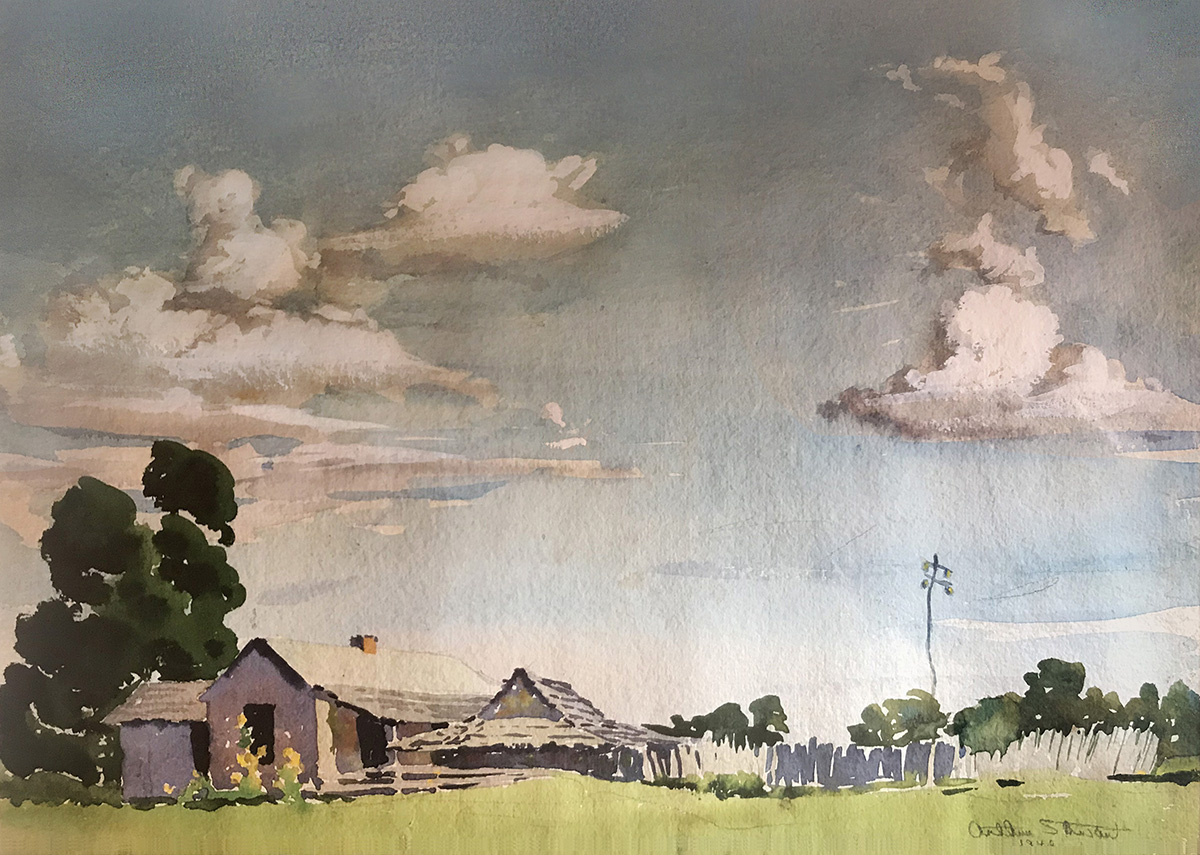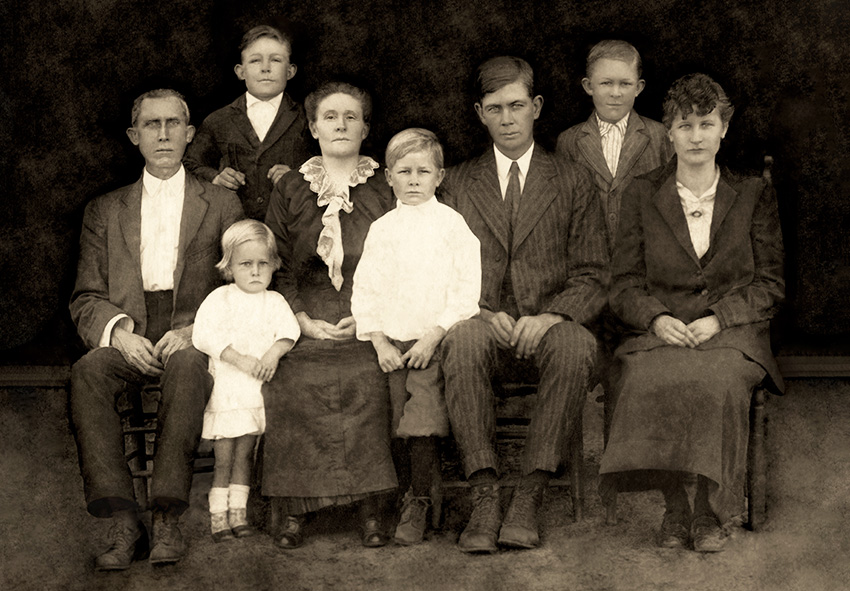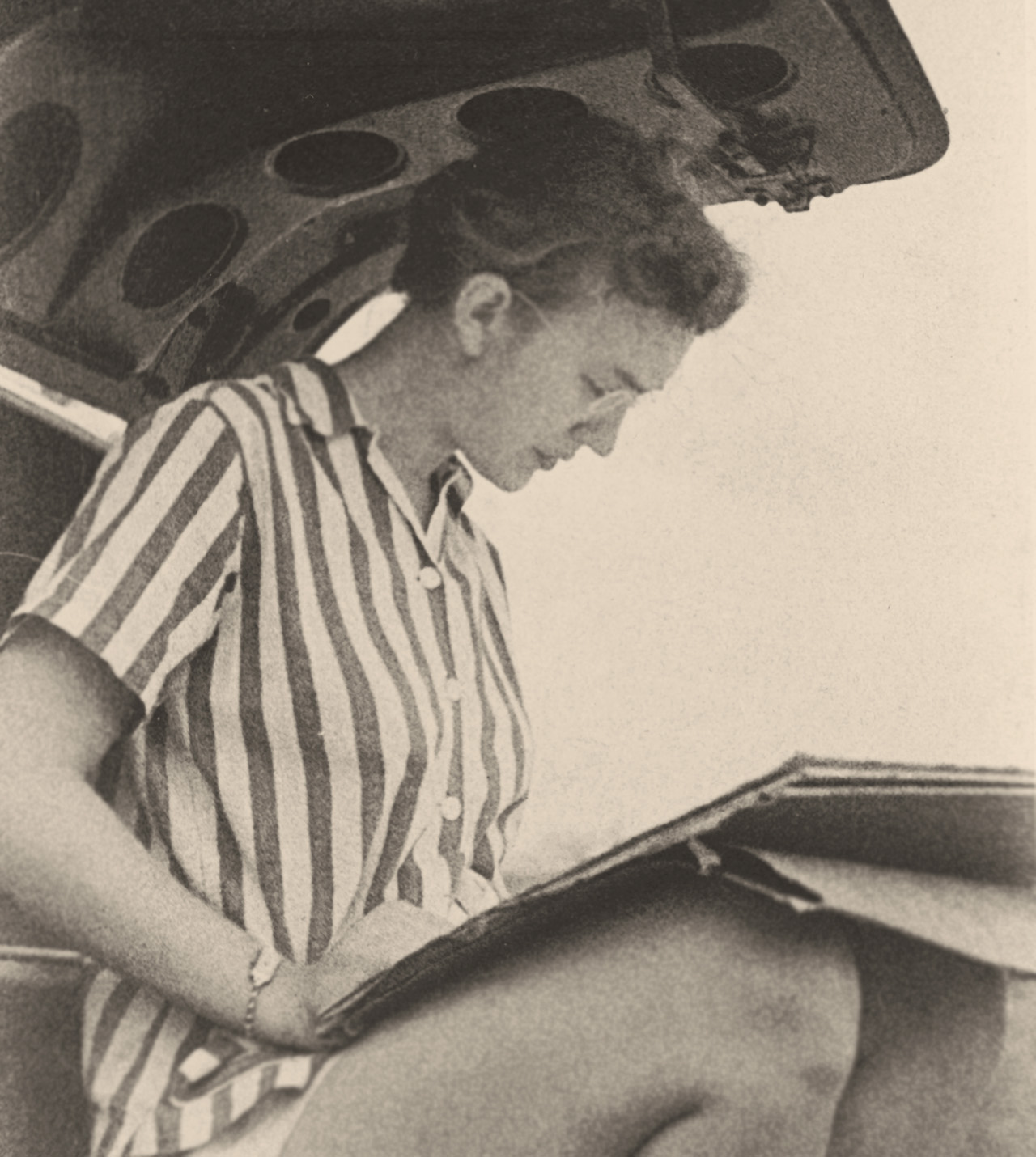—by Mark Harris, Founder & Director of the DAC Foundation
This post is a follow up to our March 20, 2020 post about how the DIXIE ART COLONY artists navigated through difficult times and refused to abandon their creative pursuits.
Growing up, I never really thought of my grandmother Winfred Era Morgan (Harris), as being particularly creative. However, I now realize that she was one of the most CREATIVE and RESOURCEFUL people I have ever known. Winfred was born on July 27, 1899, in Crenshaw County, Alabama. She was the first of 10 children born to Naaman Jonah Morgan and Elvira Maria Wyatt (Morgan). (She was the granddaughter of Henry Harrison Wyatt and Amanda Caroline Tisdale (Wyatt). (I mention this because the MORGAN, WYATT, and TISDALE families were well-known early SOUTHERN PIONEERS in Crenshaw and Covington County, Alabama. They were business owners, and public officials that, like the Dixie Art Colonists, endured and survived many hardships through the first half of the twentieth century.)
Arthur W.Stewart, Alabama Landscape, transparent and opaque watercolor, circa 1938
My grandmother Winfred, a product of the same generation as most of the Dixie Art Colonists, was 15 years old at the onset of WORLD WAR I, 17 years old at the time of the 1916 POLIO EPIDEMIC, and 19 years old at the time of the 1918 SPANISH FLU PANDEMIC. (According to the Alabama Department of Health, one of Alabama’s first officially reported cases of Spanish Influenza was in nearby Conecuh County.)
Next, there was the STOCK MARKET CRASH of 1929, followed by THE GREAT DEPRESSION, WORLD WAR II, and the HOLOCAUST. For me, it’s hard to imagine how these brave and resilient Southerners, like my grandmother and the colonists survived, as they lived through one world-wide crisis after another. Yet, not only did they survive, through CREATIVITY and STRONG DETERMINATION, THEY LOOKED TO THE FUTURE AND FORGED AHEAD.
Morgan | Wyatt | Harris Family, Circa 1917
Naamon Jonah Morgan, John Lewis Morgan, Jewel Katherine Morgan, Elvira Wyatt Morgan, Leon Elijah Morgan, William Phylander Harris, Wyatt Roges Morgan, Winfred Morgan Harris
Harris Family, Circa 1924
Wyatt Carr Harris, William Morgan Harris, Winfred Morgan Harris
When I think back, I can also recall gathering scraps of white cotton twine for my grandmother while visiting my parents at “The Wetumpka Herald,” our family’s business. (Many years ago, newspapers were bound using white cotton twine.) My grandmother would tie the scraps together, then roll the string into a large ball for use in crocheting bedspreads, tablecloths, and other useful items. She also used leftover newspapers to condition the soil and suppress weeds in the garden.
Shown to the left is DAC artist Arthur Stewart. He served as an artist in the U.S Army during WWII.
In her journal, DAC artist LOUISE SMITH EVERTON wrote that she remembered Mrs. Sallie Carmichael apologizing for shortages in food at the DAC as well as Kelly Fitzpatrick lamenting the fall of Paris. She also explained how women colonists interrupted their painting to knit sweaters for soldiers, just as today, many women and men are interrupting their normal activities to make masks for our healthcare workers and first responders.
Louise Smith (Everton), Circa 1942
Shown is Louise Smith Everton during World War II on a Plein air painting outing while participating at the Dixie Art Colony.
1
During WWII, the draft ended colony sessions for several young male colonists, such as Arthur Stewart, Lunster Green, and Karl Wolfe, although they wrote letters back to the colonists about their experiences in the military. Everton’s diary entry for June 24, 1941, notes apprehension among the colonists, at least temporarily. “We discussed what a hell of a situation our civilization is in. GEE WHEN I THINK OF IT I WANT TO CRY. We gay, carefree, casual artists are just whistling in the dark. KARL’S AFRAID—HE’S VERY AFRAID—HE SAYS PRETTY SOON WE’LL BE SCRATCHING UP ROOTS TO EAT. I’m afraid because when you come to brass tacks the artist, although he’s an interpreter of life is also an economic parasite—an appendage and I’m sure they’ll have an appendectomy. I’m so afraid.”
Louise Woodson Smith (Everton) Alabama Field, watercolor on paper, n.d.
Despite their fears and the numerous hardships these brave souls endured, like my grandmother, the colonists relentlessly continued their pursuits. And in time, each crisis passed, and many of the DAC artists became very successful artists, art educators, and prominent leaders in the world of Southern art. Like these brave souls that proceeded us, during this difficult time, we must allow ourselves to be guided by our strength and creativity, not just our fears.
Dixie Art Colony Foundation, Wetumpka, Alabama







Comments(3)
Doris Bell says:
May 23, 2020 at 9:23 amReally enjoyed this! Keep up your good work, Mark!
Mark Harris says:
May 23, 2020 at 11:03 amThank you! We are glad you enjoyed the post!
Megan says:
February 19, 2021 at 10:52 pmI have, hanging currently on my wall of ancestors, the marriage certificate of my great, great, great grandparents: Henry Harrison Wyatt and Amanda Caroline Tisdale. 🙂 It was so much fun to find this! Thank you for sharing!